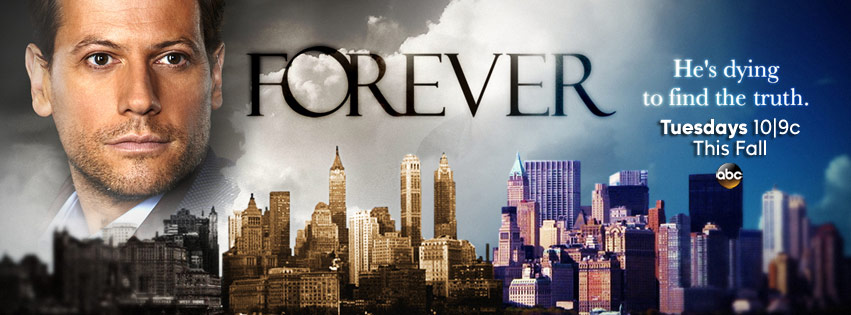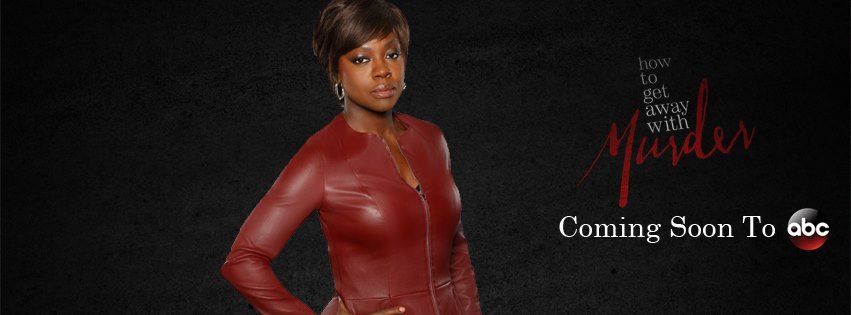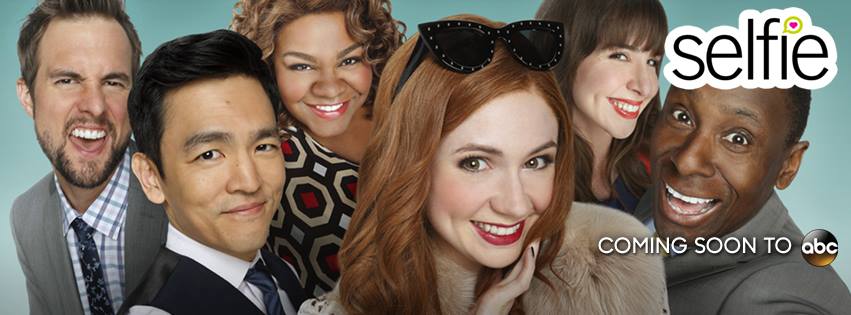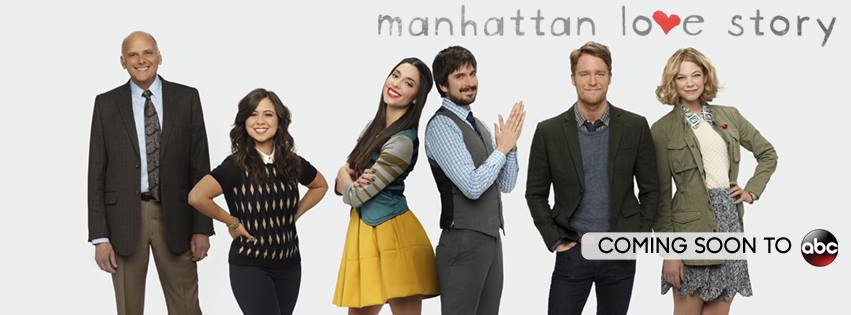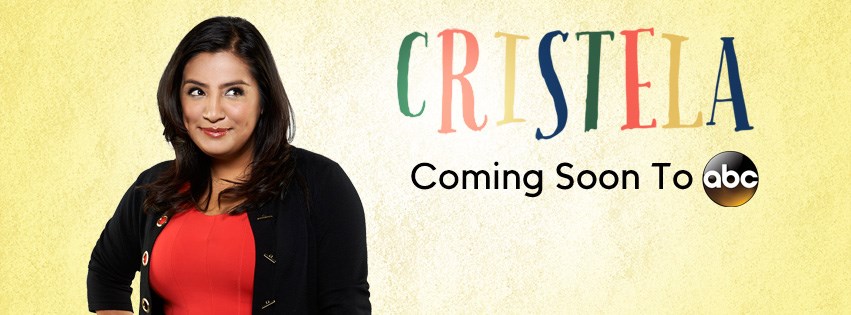Fall Premieres 2014: ABC
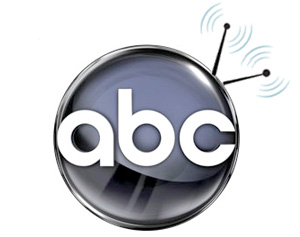 While applauded in many circles for their turn toward diversity, it’s hard to give ABC too much credit for stumbling into the fact that African American and Latino audiences are being underserved: while it’s good for television that Scandal’s success has pushed them to think about serving marginalized viewers, they originally passed on Cristela and are still preaching the “universality” of black-ish as opposed to its cultural specificity. Still, unlike NBC, ABC seems willing to acknowledge it’s not just relying on “America” as its audience, focusing on specific groups and developing programs to serve them—they’re not great at articulating it, but they’re modeling how a broadcast network likely has to work to survive in the contemporary moment.
While applauded in many circles for their turn toward diversity, it’s hard to give ABC too much credit for stumbling into the fact that African American and Latino audiences are being underserved: while it’s good for television that Scandal’s success has pushed them to think about serving marginalized viewers, they originally passed on Cristela and are still preaching the “universality” of black-ish as opposed to its cultural specificity. Still, unlike NBC, ABC seems willing to acknowledge it’s not just relying on “America” as its audience, focusing on specific groups and developing programs to serve them—they’re not great at articulating it, but they’re modeling how a broadcast network likely has to work to survive in the contemporary moment.
FOREVER [Premiered Sept 22, 2014]
Ioan Gruffodd stars as an immortal medical examiner who knows death more intimately than anyone who’s alive, but whose inability to truly know the meaning of death continues to haunt him.
*
Paul Booth, DePaul University
When I explained to my wife that we were going to watch a show about a doctor who is reincarnated every time he is killed, she remarked, “sounds like a video game!” In fact, there are a great many things that the series Forever sounds like (rewrite that last sentence with “A Doctor Who is reincarnated” and you get at least one of those progenitors); this may be the biggest mélange of the season. Take one part Elementary (CBS 2012–): brilliant but eccentric British deductionist? Check! Add one part Bones (Fox 2005–): forensic medical examiner with cheeky sidekick (Bones alum Joel David Moore)? Check! Mix with one part CSI (CBS 2000–): police officer investigating odd crimes? Check! Stir like crazy and you’ve got Forever. But of course even that doesn’t begin to approach the conflicting set of antecedents to this show – beyond the superficial biblical references (protagonist Henry Morgan (Ioan Gruffudd) has an interesting relationship with a father figure, an elderly confidante named Abe (Judd Hirsch); every time Morgan is “reborn” he emerges “baptized” from a nearby body of water) and shout-outs to Sherlock Holmes and Dorian Gray, Forever also owes a great debt to shows with similar immortal protagonists like New Amsterdam (Fox 2008) and Torchwood (BBC 2006–2009; BBC/Starz 2011). Oh, and did I mention the police officer’s dead husband (did he really die?) was a lawyer? (Law and Order: Immortal Edition, here we come!).
So does this jumble work? At times I was interested in the larger story arc, in which Morgan is contacted by another supposedly immortal creeper (a Moriarty to his Holmes). But largely the episodic plot fell flat, as the rather ludicrous scheme to poison travelers at Grand Central Station felt tacked on rather than a natural outgrowth of the villain—the episode spent so much time setting up the number of competing narrative expectations that hardly any room was left for something like, I dunno, character motivation. But there is something compelling about Gruffudd and Hirsch that makes me want to keep watching. As long as you don’t think about itfor too long, Forever is entertaining in the moment.
*
Kristina Busse, Independent Scholar
Middle-aged white guy with extraordinary deductive abilities and remarkable memory pairs with pretty female police detective to solve crime. Or, immortal haunted by his one true love and accompanied by his familial quirky sidekick searches for true death. Or, Forever Knight meets Highlander meets Sherlock meets New Amsterdam, and I’m already dreading the many historical flashbacks.
I love genres and tropes and all things repetitive as long as there’s enough of a difference in there. Forever feels too hackneyed even for me. If the cases become interesting enough, I may stick around for those, but the bingo card back story so far has me yearning to fast forward through the existentialist angsting. Pilots are notoriously difficult, maybe especially for procedurals, but even the “surprising twist” at the end resorts to an overused ploy.
The show itself was visually pleasing, the dialog not too cringeworthy, and the acting solid. But none of that suffices when the plot’s as predictable as the character arcs. If you complement generic crime show with a charismatic protagonist, the protagonist needs to catch and keep my interest. Dr. Henry Morgan never did, and that’s a shame.
*
Kit Hughes, University of Wisconsin-Madison
Our protagonist, Dr. Morgan, boards a train just long enough for what is fast becoming one of my least favorite scenes on television: the brilliant and handsome but emotionally stunted man strikes up a conversation with a woman (who, in certain variations, may be romantically interested in him). He scans the woman for intimate details about her life (in this instance, Dr. Morgan’s fellow passenger is a chocolate-loving Russian on her way to a cello performance). Upon relating his interpretation to his mark in smug certainty, the woman is either upset and unsettled (demonstrating the sociopathic tendencies of our hero; his superhuman genius, alas, means he will never quite be able to relate to the more basic—read: feminine—elements of life) or she thinks it’s cute and invites him to her symphony concert. Before you can say “Sherlock starring Benedict Cumberbatch and that new show Scorpion that I accidentally watched the first 20 minutes of,” the train crashes, tossing the woman into obscurity, killing her alongside 13 other unnamed passengers. In revealing Dr. Morgan’s struggle with non-immortals (and making for a very pretty corpse) she’s served her purpose. Personally, I’m getting pretty tired of shows where most characters are completely disposable people that serve little purpose other than telling us about the awesome white dude at the center. Did I mention that Dr. Morgan got his super-special powers of immortality after being shot for standing up for a slave (the only black character in the episode)? And his adopted “son” (Judd Hirsch; is that guy ever not playing chess on television?) is a baby rescued from a WWII concentration camp?
~~~~~
BLACK-ISH [Premiers Sept 24, 2014 @ 9.30/8.30]
Anthony Anderson, Tracee Ellis-Ross, and Laurence Fishburne star in this exploration of how race and identity are understood in the context of a 21st century, upper middle class, multi-generational African American household. If this description made even the faint image of the word “Cosby” form in your brain, ABC has won.
*
Melanie Kohnen, New York University
The Black-ish pilot wants to address still-existing racial tensions and misunderstandings while at the same not pushing the envelope too far. It wants to be culturally specific with the aim of communicating struggles within Black culture that aren’t often visible on broadcast TV yet it also tries to embody “universal” values. The result is a post-racial sitcom that invites viewers to laugh at ignorant (white) people who stereotype Black culture while also allowing viewers to distance themselves from that ignorance. The show has moments in which it makes frequently unspoken biases visible. For example, it contrasts main character Andre Johnson’s expectation to be promoted to Senior VP with the reality of him being promoted to Senior VP of the newly created Urban Division. Angered by being viewed in such a reductive way by the all-white management, Andre creates a presentation on “urban” culture that features material from the 1992 L.A. Riots. The grainy archival footage is jarring both for the diegetic audience and the TV audience. The show suggests that this flashback clearly doesn’t belong in either Andre’s presentation or this sitcom. The ending reaffirms this rejection of a too-violent past (which does not appear quite so “past” considering recent events in Ferguson): Andre embraces his new title and creates a vision of Black culture that is “hip, cool, and colorful;” a vision on which all of “us” can supposedly agree.
*
Alfred L Martin, Jr., University of Texas at Austin
What do you get when there is a call for more culturally specific series about black people? The series probably looks a lot like blackish, ABC’s new series that focuses on an upper-middle class black family struggling to maintain their claim to “authentic” blackness as they “move on up.” ABC is clearly (at least outwardly) invested in the success of the series, granting it the “pimp” spot after its hit series Modern Family. However, blackish feels like it was created in a laboratory. It has all of the elements, but they don’t quite come together in a wholly enjoyable way. I appreciate that blackish is concerned with blackness in an era when Shonda Rhimes would have us believe that race, gender, class and sexuality no longer matter. That blackish attempts to balance the “problematic” of being a culturally specific, upwardly mobile Huxtable clan is refreshing. The “Pilot” has to do a lot of heavy lifting, as “Pilot” episodes often do. It must attempt to set up the central tension while also attempting to be funny. Discussions about baked “fried” chicken, hot sauce and grape soda help to make the series feel like it might be doing something different with televisual blackness (other than reifying stereotypes). That Larry Whitmore’s Whitmore Films is involved in production also helps to buy the series some capital. However, I remain bothered that the series wears its bootstrapping narrative on its sleeve. Can there never be a televisual sense of the transference of black wealth? Must televisual blackness always already be about “new money?” Ultimately, blackish is what network fare is supposed to be – mildly amusing and inoffensive.
*
Karen Petruska, University of California at Santa Barbara
This show is going to (rightly) attract a lot of attention because it features a prosperous African-American family on a sitcom—a rarity—talking explicitly about what it means to be wealthy and black in a white world—a greater rarity. A possible problem, though, is that the show suggests race is a preoccupation of our protagonist, Andre Johnson (Anthony Anderson) but no one else. The show concludes the episode’s central dilemma—has Andre been promoted just because he is black?—with Andre changing his own interpretation of the situation, without any explicit questioning of his white boss or larger power structures.
Another possible issue is generic. Because the show is a family sitcom, airing after Modern Family, it likely feels a need to end with a message and a smile. For Andre to feel better about his promotion, therefore, he decides to define “urban” as “hip” and “cool” rather than delver deeper into the complexities of being black in (corporate) America. There is one other character in the house, Pops (Laurence Fishburne), who seems intended to be the measuring stick for what qualifies as “authentic blackness”—and boy will it be interesting to see if he exists in this world to speak the truth while Andre finds endless means to compromise.
There’s an impressive group of prominent black creatives behind this show, including creator Kenya Barris and executive producer Larry Wilmore. Barris has discussed “double consciousness” when describing his goals with the show, and the conflict between colorblindness (espoused by the wife and children) and cultural specificity (espoused by Dre and Pops) could prove fertile ground for racial commentary. I should also note the show was funny, the female lead was well drawn, and there seems a lot of room to grow. With these folks heading the project, I’m pretty optimistic.
~~~~~
HOW TO GET AWAY WITH MURDER [Premiers Sept 25, 2014 @ 10/9]
Viola Davis stars in the latest Shonda Rhimes-produced series, this one focused on a first year law school class that doubles as an internship competition for a prestigious law firm, and which may or may not have students exploring the series’ title by the time they earn their credits.
*
Kelly Kessler, DePaul University
Perhaps not most importantly, but noticeably in light of last week’s The Mysteries of Laura, How to Get Away with Murder’s Annalise Keating is everything Laura fails to be. She’s fierce. She’s composed. She’s, in fact, everything the other leading women of the Shonda Rhimes block failed to be in their series introductions. (I know, this is not technically a Rhimes show, but it has been sold as part of her brand, is helmed by someone coming from her stable, and now completes ABC’s Thursday night Shonda block.) The opening episode is solid. I see it as Reunion meets Law and Order meets Legally Blonde (just because of the competition) with a fierce, hot, perhaps amoral and unflappable female protagonist. Viola Davis is fabulous as the show’s steely leader, and unlike Grey’s Meredith or Scandal’s Olivia, both of whom were introduced as unequal sexual partners to men in power, Annalise clearly has control of the situations at hand. Her unyielding composure, badass leather jacket, and ability to manipulate those around her—students, cops/lovers, and employees—quickly establish her as a woman with which to be reckoned. Her young, hot, diverse, faithful, and easily led law students’ anxiety and desire to please prove a nice juxtaposition to her sense of cool. The show’s narrative mystery of “who killed Keating’s husband (poor Tom Verica), why, and will they get away with it?” emerges through a mélange of flashbacks and flashforwards brought to us through heavy underscoring, quick shots, fast movement, and flashy graphic matches. These flourishes don’t, however, seem to compromise the show’s clarity or watchability; they simply provide a pulsing rhythm for the ensuing mystery and the pilot episode’s panicked dash to bury the body of the titular murder. Viola Davis, check. Strong female protagonist, check. Twisty plot, check. I’m in.
*
Louisa Stein, Middlebury College
I spent the first 41 of the 44 minutes of the premiere of ABC’s How to Get Away With Murder suspended in between hopeful, doubtful, and cringing. I think fundamentally what I really liked about the series was that it didn’t dumb itself down plot-wise for the viewer. Yes, its episodic plot–in which law students of the famed Professor Keating (Viola Davis) must help her with a case–was forgettable and familiar. But the episode at the same time set up not one but two serial mysteries, all the while only indirectly asking how the two are connected.
How to Get Away with Murder allows us to feel the pleasurable confusion of a long form mystery. It fosters uncertainty and uses it to draw the viewer in. It doesn’t feel the need to hit us over the head with narrative explanation of its mystery set up; it doesn’t even signpost when we time shift with changes in filter a la Damages and Pretty Little Liars.
Don’t get me wrong; How to Get Away with Murder’s premiere was no Damages or Pretty Little Liars. This premiere feels almost purposefully uneven. It’s like you can see the perforation lines, the chunks that are meant to be promo friendly, or to add sensation for sensation’s sake. How to Get Away With Murder is more an intriguing but lumpy mix than an elegant synthesis.
And there are moments when the actors’ performances transcend the episode’s unevenness. Like that one moment after Professor Keating has inappropriately cried in front of and then fondled a student; (I could barely watch—it was So Wrong). But after the student (Wes Gibbons, also very engagingly performed Alfred Enoch) leaves the room, the camera lingers with Keating/Davis as she collects herself, and I was mesmerized. I felt a nuanced character there, palpably, beyond the writing, and I want to get to know her more. So for Keating and for the fun of a serial mystery that isn’t afraid to be complicated and a bit over the top, I’ll be tuning in next week.
*
Tony Tran, University of Wisconsin – Madison (with Liz Griffin, Duke Law JD)
As suggested by my partner in crime (and regular The Good Wife viewing companion), this show may want to change its name to How to Get Fired from Law School. Apparently attorney-client privilege isn’t important wherever Middleton Law School is located, but having your client (and all her files) open to a large group of unknown and subpoenable people isn’t the best strategy for a murder case. Violating doctor-patient confidentiality through misleading conduct? Eh, just Fruits of the Poisonous Tree. And, no, you can’t enter random evidence through the legal argument of “Oh, I thought you had that”—at least call a recess! And we’re sure the Torts and Evidence professors will say something at the next faculty meeting about encouraging students to skip their classes.
Legal issues aside, I struggled to care about anyone on this show. The law students—which took up way too much screen time—are annoying in both timelines, a mixture of characteristics derived from lawyer jokes and the teenagers from I Know What You Did Last Summer. Even when Viola Davis actually gets a chance to showcase her skills in a scene with Wes (Alfred Enoch), I was more distracted by the awkward setting and placement of the scene (and wondering why my advisor never cries at an uncomfortable distance with me in the bathroom). While I am usually invested in the verdicts of The Good Wife’s trial of the week, the court case in the pilot was rushed, uneven, and abruptly concluded. Is it unfair to apply our legal standard and compare “Revenge/Scandal in Law School” to The Good Wife? Totally. But at least when The Good Wife is taking liberties with the law, Alicia, Kalinda, and Co. are characters I want to watch.
*
Taylor Cole Miller, University of Wisconsin – Madison
I can’t help but feeling a little bait and switched by the pilot of How to Get Away with Murder (HTGAWM). The teases for this show were so damn captivating, highlighting the serious badassery of Viola Davis’ Annalise Keating with her tailored suits and leather jacket drawing me into something dark and lascivious and decadent–all set to my current jam, “Love Runs Out” by OneRepublic. What I got instead was a Grey’s Anatomy of law school, where a bunch of actors and characters I don’t find all that intriguing were hogging the screen from Viola Davis.
Still, Davis’ performance is terrific, and I mean crying-from-the-nose-after-fondling-a-student terrific. HTGAWM could convince me to sit through hours of endless student banality, laboring to color in a world as captivating as a Hogwarts Law School (someone please make that show) mixed with I Know What You Did Last Summer (thanks, Tony), just to give Davis the breathing space to bring her little bits of magic to that world week after week. Where I think the ABC Shondaland bloc is dangerous is how old and obsolete HTGAWM makes Grey’s Anatomy feel, where a one-night stand gay rim job (!) replaces the “sweet lady kisses” and monogamy Grey’s constantly trots around. Meanwhile, Scandal‘s Cyrus bizarrely articulated everything wrong with that show in its new premiere and how monotonous and boring the circular relationship between Olivia Pope and Fitz has become. So, even with all its problems and its occasionally dull student characters, I anticipate liking HTGAWM far more than its TGIT predecessors.
~~~~~
SELFIE [Premiers Sept 30 @ 8/7]
Karen Gillan and John Cho star in this social media-age Pygmalion riff, as Eliza must detox from her Instagrammed existence to confront her sense of identity with the help of an uptight but successful Henry.
*
Kit Hughes, University of Wisconsin – Madison
That the Laughing Cow commercial featuring a softly-spoken, bright red cartoon bovine musing about the unfortunate trajectory of snacking in America while wearing large disc-shaped earrings made of her own cheese was not the most objectionable thing I witnessed during the half hour I watched television for this review is somewhat discouraging.
Is this what it really means to contemporize Pygmalion? Not by recasting the story into a tale of two people mutually interested in each others’ fate and welfare negotiating desires and frustrations encountered while trying to shape a life together, but by adding lots of on-screen widgets, chat abbreviations, and hashtag talk? I get that this is a comedy. And while I will be inwardly amused by any joke that makes fun of Goop™ I will be equally disturbed by a show that introduces its main character by noting she is the top sales rep in her company only to toss off the punch line “the magic of the miniskirt.”
One of the problems with transforming Pygmalion into a serial television show is that the critical part—the last two acts, in which Eliza pushes back against the objectifications and controlling demands of Professor Higgins to realize her own agency—can be endlessly delayed, making the show’s primary narrative engine the transformation of our “butt on the inside” heroine plagued by “loose morals.” And what’s worse, this Eliza is getting it from both sides. In the most misguided rip-off of New Girl I’ve seen yet, Eliza’s next-door neighbor, Bryn-Makeunders-Are-My-Everything, stops by with a coterie of knock-off Jesses to doll up (doll down?) Eliza for a wedding while singing a ukulele version of “Bad Romance.” Invoking a different Lady known for her (confrontational) transformations while forcing our Eliza into a peach sheath and a nude lip? #tryAgain
*
Melanie Kohnen, NYU
Selfie lost me in the first five minutes. There are two main issues I have with the show: one, that it once again portrays relationships forged via social media as shallow and inferior to “real” friends, and second, that it represents selfies as narcissistic pursuit, echoing a very gendered popular discourse. Instead of considering selfies as a way for young women to take control over their own image, the show portrays them as evidence of female obsession with popularity and vanity (not to mention that Eliza’s successful career is attributed entirely to her attractiveness). Perhaps unsurprisingly, Eliza needs an intervention from a man who will show her the way to becoming a “better person.” While Henry also embodies a stereotype of the digital age—the cranky hipster who doesn’t get social media—the diegesis is far less hostile toward him and grants him a position of authority. As much as I like Karen Gillan and John Cho and would like to see a sitcom with them, Selfie and I will part ways here.
*
Matt Sienkiewicz, Boston College
Selfie has a theory about new media. Well, a couple of theories. The first, and perhaps the more obvious, is that new media, no matter how crassly invoked, still makes everything it touches a little sexier. AOL once built a business model around this concept. Yes, that 10,000 free hours disc was the epitome of junk mail, an unsolicited come-on for a product you would have asked for, had you wanted it. But it was a CD. And it could bring you online. In a mailbox full of Eastbay catalogues and K-Mart circulars, the disc may not have been cutting edge. It was, however, new. Selfie fills your screen with Facebook logos and Instagram filters, offering today’s televisual equivalent of a late 90s CD rainbow reflection—pretty colors signifying little more than a soon to be embarrassing vision of modernity. But it does feel new.
Selfie’s second theory of new media is more intriguing but less convincing. In its best moments, the show asks an interesting question about the capacity of our cellphone apps to adequately reflect that mysterious inkling we call personal identity. The answer, less interestingly, is that they cannot. New media, in the world of Selfie, forces you to trade You for @you. And no one wants to date @you.
All of which, of course, positions television in a surprising place. The medium that once threatened to turn suburban kids into ultraviolent, oversexed, undereducated hooligans no longer has the power to corrupt our essences. This is a loss. But what television no longer has in danger, Selfie suggests it has replaced with Archimedean perspective. From the vantage point of a TV studio, anyone can see the futility of looking for truth in a tiny screen you once forgot at the laundromat. A television, however, is different story. In Selfie’s worldview, television isn’t old media. It’s wise media.
*
Tony Tran, University of Wisconsin – Madison
If one were to exchange the #Selfie music video for the first five minutes of Selfie, I don’t think anyone would notice with the similar “social media” aesthetics and grating voiceovers. How did “most butt” become this hollow character? And how did someone like that become the number one salesperson? Or perhaps the show is making an argument about the gender dynamics of big pharma and the lack of women in the medical field? Or maybe not.
Once you get pass the techno, vomit, and Frozen reference, Eliza (Karen Gillan) slowly gets more depth and the show actually becomes funny (if still a bit uneven). The Goo Goo Dolls paired with Snake on a Nokia made me giggle. And someone on the writing staff isn’t a fan of Zooey, but that is completely fine with me—more random ukulele covers of pop songs please! However, as a follower of the goop lifestyle, not sure how I feel about Gwyneth jokes.
The star of the show for me is John Cho as Henry. On paper, a boring, uptight Asian American male lead generally doesn’t bode well, but I found Cho charming and funny (and we can credit the My Fair Lady influence for some of the uptightness). Weirdly, I just find his movements comedic, showcased in the scene at his house (and as an emo Harold). I hope race continues to be mentioned; it would be easy to push a color-blind adaptation, but his boss’ forwarded email forces us to think about everyday Asian American experiences. And while Eliza calls him gay—which can trigger a history of Asian American male emasculation—I’m glad Henry/Cho just shrugs it off, because it’s not an insult (and it doesn’t matter because at 42, he looks amazing!). Will tune in to see where this goes.
~~~~~
MANHATTAN LOVE STORY [Premiers Sept 30 @ 8.30/7.30]
The story of two young and attractive New Yorkers whose relationship gets off to a rough start, the show works to differentiate itself by having two internal voiceovers from both male and female leads. The results will surprise you (if you’re surprised by essentialist depictions of gender, which seems unlikely).
*
Sarah Murray, University of Wisconsin – Madison
The intended object of our affection in Manhattan Love Story is the voiceover. If, as the show’s promotional trailer would have us believe, we’ve exhausted the shocking twist romcom ending wherein woman ends up not with man but with independent self, then this half-hour comedy brings us back to the happy ending we’ve missed. Dana (Analeigh Tipton) is a new New Yorker, a fresh-start-follow-your-dreams gal who pre-loves New York. Her bucket list of New York to-dos is the prop that carries us through her first disastrous date with the womanizing Jake, our established New Yorker. (Although Jake’s only New York-ness seems to be the fact that he would never go to High Line Park…a New York-ness inauthenticated by comment snark indicating the pilot’s initial reception: “no one calls it High Line Park – it is the High Line”). Nothing says love like a bad first date in a bucket-listed New York (BLNY).
With the comfort that love will likely prevail, we are left to focus on the filter-free thoughts of the two disconcertingly attractive leads as the show sets up their story through the disconnect between their on-screen actions and their internal streams of consciousness. Voiceover and romantic comedy maintain a loveless yet occasionally comforting marriage. Manhattan Love Story renews those vows. The re-return to voiceover, as inner monologue, makes sense – its confessional nature has always held the potential for humanizing characterization. Here, in BLNY, it’s like listening to gender socialization happen. The show wants voiceover to be our unexpected love, the site where our quietest thoughts offer surprising dimensionality. Instead, this fraught narrative technique introduces a rather boring world of hastily engineered quirk and humorless objectification.
*
Nora Patterson, University of Wisconsin – Madison
There were a few moments when the snarky, quirky, hipster humor of this show made me smile. I am embarrassed to admit this, because Manhattan Love Story really is the epitome of lily-white, heterosexist, network drek. I was turned off the second the camera began rolling and we met lead love interest Peter as he walks down a New York street, checking women out and mentally noting whether or not he would bang them. This is cross-cut with footage of Dana doing the same mental checklist as she walks down a street, but this time, mentally drooling over purses. Ok, we get it, men are sex addicts and women love purses. Man, if we are to believe this comedy, Manhattan is populated by good-looking, straight white yuppies. The only person of color in this show locked Dana in the stairwell on her first day of work. Oh wait, there may have been some non-white extras too. Because Manhattan’s cultural diversity is really just the backdrop for WASPy romance. The dialogue is contrived, and none of the jokes seem fresh. I literally remember the “typing-someone’s-name-into-my-Facebook-status-instead–of–the–search–box” gag from ABC’s sitcom’s ill-fated 2013-14 sitcom Trophy Wife. In fact, I am convinced the writers just went through failed sitcoms scripts looking for material; I remember the date scene, internal dialogue included, from the short-lived 1995 FOX sitcom The Crew. Did I mention Peter works for his family’s trophy-making business, a premise more suited to a small, Midwestern Main Street than a Manhattan office building? Honestly, besides the canned writing, the whitewashed depiction of NYC, and thinly-veiled misogyny of this show, the fact is that none of the characters are really likable. Will this stop ABC from ordering more? Maybe not. But the low ratings might.
~~~~~
CRISTELA [Premiers Oct 10 @ 8.30/7.30]
A multi-camera family sitcom from Cristela Alonzo, the series focuses on a young law student struggling to get her life started, and her multi-generational Latin American Texas family whose love doesn’t always offer the kind of support she’s hoping for.
*
Karen Petruska, University of California – Santa Barbara
Cristela’s biggest asset is Cristela herself: stand-up comic Cristela Alonzo brings to this role the enthusiasm of the novice. Every so often, Alonzo—portraying an aspiring attorney, newly appointed legal intern—would throw her head back in a full-throated laugh, and it seemed so entirely genuine that I could not help but be charmed. Her extended, knowing, exchanges with seeming antagonists, including her brother-in law (disgruntled to have Cristela living in his home, rent free) and her new boss (possessing a casual bigotry that she has no problem acknowledging) give Cristela room for her “bump-set-spike” comedic stylings, though the larger pleasure of the scenes derives from the actors having free reign for equal opportunity offense. A domestic and workplace comedy, Cristela plays off some universal sitcom tropes—offering the expected complaining grandmother; the dumb,
entitled blonde; and the randy admirer—while nevertheless grounding the series in a broad Latino sensibility (with unsubtitled Spanish spoken at times). My favorite moment was more serious, where
Cristela’s sister took her to task for intervening in their parenting, and it showed that while this show might be a traditional laugh-track comedy it also can achieve grounded moments of honesty. I likely won’t add this show to my rotation, but that’s mostly because it is a perfectly solid example of an old-school sitcom (old school on many levels), and I tend to look for something a bit different.
*
Ethan Thompson, Texas A&M – Corpus Christi
Cristela has taken six years to finish law school, repeatedly dropping out to care for her mother, and living with her sister’s family. Now she’s ready for the big time: an unpaid internship at a law firm. Her Mexican-American family is skeptical. Wouldn’t she be better off taking a job at the call center where her sister works for $12.50 an hour? They just don’t share Cristela’s conviction that this is what it takes to leave behind your working class origins.
Cristela could be an interesting twist on the domestic comedy, and not just because its star and family are Mexican-American. By setting up both a workplace family and an extended family at home, there could be plenty of opportunities to explore different expectations of what constitutes the “American dream” and what role families play in that dream, or supporting each other as they seek to find it.
Unfortunately, all the individuals are one-dimensional stereotypes, and the series seems most interested in cheap jokes about Mexican-Americans being janitors, or being illegal immigrants, or selling oranges. The most Cristela amounts to is an opportunity to map what makes a joke about Mexican-American identity acceptable on network television in 2014.
For example, when he first meets Cristela, the boss at the firm asks, “You can’t swim? How’d you get to Texas?” Later he tells her that if she messes up he knows he can just call the immigration service. Since he hired her, maybe we’re supposed to believe he doesn’t mean these things, that he is just performing this offensiveness.
That’s the problem with Cristela; it doesn’t want to mean anything. Maybe that attitude makes it easier to say whatever you want, but it doesn’t encourage viewers to care about your characters, and that’s something else a domestic comedy needs.

